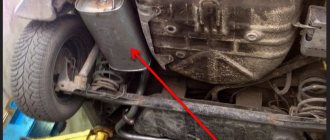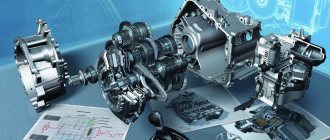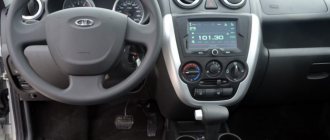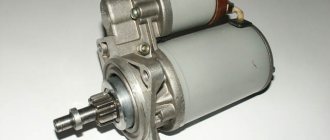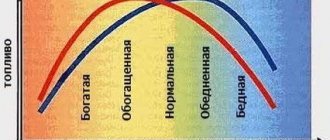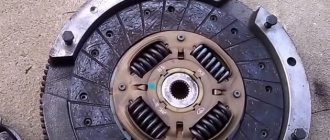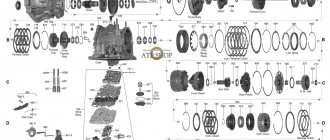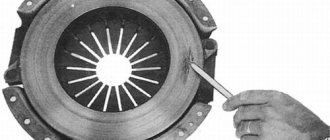Mechatronics DSG 7 is a separate module responsible for shifting gears in preselective transmissions. The product consists of electronic and hydraulic parts that provide a quick change in the gear ratio. If the components are damaged, the transmission mode is disrupted, which leads to immobilization of the vehicle.
Mechatronics.
What is mechatronics at DGS
Mechatronics is a module equipped with an electronic control unit, sensors and hydraulic drives that provide shifting in preselective gearboxes.
The device is made in the form of a separate unit located on the side of the transmission housing. The speed change point is determined based on information received from various sensors (for example, oil temperature or pressure, rotation speed of the input and secondary shafts) that are connected to the controller.
How do device malfunctions manifest?
The following signs indicate possible problems in the functioning of the electronic-hydraulic unit of the box:
- inefficient operation of the transmission;
- the presence of problems in electronics, hydraulics, mechanics;
- reduction in the functionality of the car.
The electronic-hydraulic unit has a high level of reliability. Meanwhile, the greater the mileage traveled by a car, the higher the likelihood of it breaking down. The situation can be corrected if you contact our specialized service.
Main functions
The device provides sequential gear shifting and clutch control. The unit automatically determines the thickness of the friction linings and provides adjustment of the position of the actuators. Non-contact sensors are used to determine the condition of the pads, eliminating the possibility of distortion of measurement results due to wear or vibration. The mechatronics controller checks the position of the control elements every time the gear is engaged, and when the gaps change, the electronics automatically adapt.
What is DSG and features of this gearbox
So, to put it simply, DSG stands for Direkt Schalt Getrieb. If we separately consider the abbreviation DSG, which is well known among car enthusiasts today, the translation from German in this case literally turns out to be the following: “direct gearbox.”
Note that this type of gearbox is a type of selective dual-clutch robotic gearbox, which is produced today by various global automakers. At the same time, as mentioned above, Volkswagen was the first to introduce such a transmission to the mass market, after which this manufacturer also began actively popularizing the unit.
In the robot box, the ECU sends a control signal to the actuators (actuators). Next, as with a manual transmission, only without the driver’s participation, the clutch disc is disconnected, a gear is selected and engaged, then the clutch disc is reconnected and the torque is again transmitted to the transmission.
At the same time, gear shifting does not always occur as quickly and imperceptibly as with an automatic transmission or CVT, the ECU does not always select the correct gear, the speed may change jerkily, a “failure” may occur under the gas pedal, etc.
Taking into account such shortcomings of single-clutch robotic gearboxes, a dual-clutch gearbox was further developed. Such a transmission was supposed to solve all the existing problems, making the robot not only similar in comfort to other types of automatic transmissions, but even better.
Then the whole process will be repeated for the remaining transmissions. It is important that the gears are switched as quickly as possible, and the box itself is called preselective, since the selection and engagement of the next gear occurs in advance.
Note that there are several types of preselective robotic gearboxes, which are manufactured by various global car and transmission manufacturers (for example, Ford Powershift). At the same time, it is the DSG that enjoys a bad reputation.
The reason is simple - it was the DSG that was the first to go into mass production, there are also certain design features, and competitors first studied experience, thanks to which, to one degree or another, they avoided some of Volkswagen's mistakes. However, this does not mean that analogs from other manufacturers are better. The same Ford Powerlift, although it appeared later than the DSG, also has a number of disadvantages and features.
So, the double clutch discs in this box operate in an oil bath, and the box itself received the common name “wet” DSG or DSG with a wet clutch. The friction between the discs turned out to be small, which allowed the clutch to transmit a fairly large torque (about 350 Nm) to the box itself. Gear changes also occurred quickly and smoothly, the life of the clutch and the gearbox itself was quite long.
So, this particular box turned out to be the most problematic. On the one hand, there is a minimum of losses and maximum efficiency, since the oil has been removed from the clutch. On the other hand, the smoothness of operation has changed, the clutch life has decreased, problems with switching, jerking, etc. have appeared.
Also a little later, Volkswagen again released two more modifications of the DSG, again installing a “wet” clutch and leaving 7 gears. Such wet DSG-7s are less problematic than their counterparts with a “dry” clutch.
Back in 2008, the well-known S-tronic gearbox (in fact, a type of DSG) was released for Audi models with a longitudinal engine. This box “digests” up to 600 Nm of torque. In 2010, an updated type of DSG appeared, designed for installation with transversely mounted engines.
This unit can withstand up to 500 Nm of torque. So, in practice, it is the “dry” DSG-7 that causes the most problems, while other types of this gearbox are more or less inferior to their competitors.
How it works
The mechatronics device includes the following components:
- An electronic control unit that collects and analyzes information from sensors. The controller provides control of 8 valves with electromagnets, which are responsible for changing speeds and operating clutches. The measuring elements are located inside the electronic module; the input shaft speed sensor is located in the gearbox housing.
- An electro-hydraulic circuit that allows you to create the oil pressure necessary for switching. The module design includes a high-pressure gear pump with a storage tank. To regulate the pressure, a separate valve, configured at the factory, is used. The reservoir (capacity 0.2 l) is connected to solenoid valves; in total, the mechatronics contains 1.1 l of special oil. The design of the circuit includes a filter element that separates oil from dirt.
Mechatronics units.
The design of the unit includes sensors:
- rotation speed of the gearbox input shaft (1 element is located in the crankcase and 2 are installed in the mechatronics unit);
- stroke of the clutch discs (each clutch has its own element);
- speed shift drive (4 parts);
- pressure in the mechatronics hydraulic system;
- friction lining temperatures (common for 2 clutches);
- gear shift (when installing paddle shifters under the steering wheel).
The design of the unit includes power drives associated with gear shift forks. The opposite side of the rod is equipped with a piston, which is acted upon by the working fluid. A total of 3 drives are provided to control forward gears (for 1-3, 2-4 and 5-7 speeds), an additional element allows you to enable reverse speed and 6th gear for forward movement. The position of the shift fork is determined using a permanent magnet, the information is transmitted to the control controller.
The oil system of the mechatronics unit is isolated from the lubrication system of the mechanical circuit of the gearbox. When servicing the transmission, various types of process fluids are poured into the crankcases. The use of a double lubrication system made it possible to avoid particles generated by gear wear from entering the mechatronics valves. The use of special oil to drive the shift forks helped improve the performance parameters of the box at subzero temperatures.
Oil system.
The design of the unit includes control valves that provide oil pressure in the sections of even and odd gears. If leaks or malfunctions are detected, the section is deactivated, which is recorded by the driver as a failure to switch to certain speeds. The box contains valves for switching drives; when the ignition is deactivated and the selector is moved to the parking position, 1st gear or reverse speed is automatically engaged (for additional holding of the vehicle in the parking area).
Repair in accordance with modern standards
In our service with a 10-year history, you will receive professional service for preselective gearboxes. All services to restore the functionality of the device are provided with a two-year warranty - a period of 24 months or 60,000 kilometers from the moment the car leaves our repair shop.
When performing repairs, auto mechanics:
- flexibly adapt the technical unit to various operating conditions;
- update software, install modified versions of programs;
- comply with technical regulations.
The service area is equipped with the latest technology. There are sufficient certified spare parts in the company's warehouse to carry out repairs of any complexity. A long-term guarantee is provided for services provided.
How to sign up for a service station
If you doubt the correct operation of the mechatronics, sign up for a technical unit check at our service center with the help of the administrator by calling the contact phone number indicated on the website or using the feedback form. ,
From a specialist you will receive:
- consultation on any issue;
- preliminary calculation of the cost of repairs;
- information about the conditions for providing services in installments.
The service center is equipped with computerized equipment. With its help, technicians can quickly identify the source of the problem and then fix the problem as quickly as possible. A specialist will perform a free diagnosis, familiarize you with a list of errors and offer a recovery action strategy that is appropriate to the situation.
Call us at the phone numbers indicated in your contacts. Ask your questions. Sign up for a free diagnostic and come!
Typical faults
Common DSG 7 gearbox failures associated with failure of the mechatronics unit:
- The appearance of jerks at the moment of starting movement or during acceleration. When connecting test equipment, no errors are detected.
- Shocks and vibrations that occur when changing gears. When carrying out computer diagnostics, no fault codes are detected in the control unit.
- Moving the selector to the reverse position does not engage the gear. The electronic controller puts the box into emergency mode, and all possible operating mode indicators turn on on the instrument cluster display. During diagnostics, errors associated with breakdowns of speed shift drives are recorded.
- When you move the gearshift lever to the forward or reverse position, clicks occur, but the car does not move. The reason is incorrect operation of the gear shift fork drives.
- Enabling emergency operation. After turning the ignition off and on again, the defect disappears. The car moves, but after a while the problem occurs again. The cause of the malfunction is the clutch control valves; connecting a computer will allow you to determine the damaged element (error codes are stored in the controller’s memory).
- Erroneous gear shifting, which occurs when the engine crankshaft speed is excessively high or low. The defect occurs when installing a unit from another car equipped with an engine with different characteristics. The box controller tries to work according to the engine mapping stored in the memory, which leads to failures. To eliminate the malfunction, it is necessary to adapt the transmission to the vehicle and replace the software.
Mechatronics firmware
As is known, mechatronics from various types of DSG-6 and DSG-7 gearboxes are not interchangeable. However, within the same type of transmission, it is possible to install a “non-native” unit. Of course, here you need knowledge about the applicability of the unit and the availability of mechatronics firmware for a specific car.
We have about 500 firmware for mechatronics DSG DQ200 (0AM / 0CW) and DQ250 (02E / 0D9), and about 50 firmware for DQ500 (0BT / 0BH). So we can choose the best cost-effective option for replacing mechatronics for our clients.
Summarizing:
Only specialists with certain skills and extensive experience in this field can accurately determine damage in the DSG mechatronics. By entrusting the repair of the control unit to professionals, you can significantly save money when repairing the gearbox.
Diagnosis of problems
To detect mechatronics faults, a diagnostic computer is used, which is connected using an adapter to the OBD-II connector on the car. Software (for example, VASYA-Diagnostic) is installed on the test computer, which allows you to read information from the control unit. The program contains factory settings of parameters (taking into account the tolerance range), the gearbox model is determined when switching the cord.
https://youtube.com/watch?v=9wE76bHAlOo
What cars are equipped with DSG?
VAG uses all versions of its gearboxes (S-Tronic, DSG and PDK). But which cars were equipped with dry DSG7?
You can determine it yourself by using our service by clicking on the LINK .
In short, the problematic DSG was installed on almost all VAG cars. These are Skoda, Seat, Volkswagen, Audi. You will find it on cars with engines up to 1.8 liters. You can also determine by the torque in the technical characteristics, if the torque is above 250Hm, then with a 99% probability there is the good old DSG6, or even a classic hydraulic automatic transmission.
If repair is not possible
In case of irreversible damage to the unit, an element removed from another gearbox is installed. The mechatronics undergoes preliminary restoration repairs, which ensures uninterrupted operation of the unit for 3-6 months (the warranty period depends on the seller). The faulty unit removed from the machine is used as a donor when repairing units or is restored through a major overhaul.
The installed unit requires programming and adaptation; the procedure is performed during the installation of the product on the car. It is possible to install units from various brands of cars produced by the VAG concern. For example, on a Skoda car you can install a unit borrowed from a similar box used on a Volkswagen car. During installation, the engine power is taken into account, the transmission controller adapts to the torque and power curves (by uploading the appropriate software).
Removing the DSG mechatronics
This operation can be performed with or without dismantling the gearbox. This depends on the planned repair and replacement of this element.
When carrying out work without dismantling the gearbox, we first remove all elements that interfere with free access to the mechatronics. Drain the oil from the box. Pull back and secure the clutch forks using washers. Separate the plug of the electrical wires. We unscrew the fastening elements of the mechatronics itself. Carefully remove this part.
Damage to mechatronics does not always require its complete replacement. As a rule, you can change individual elements of it. For example, if necessary, you can replace a faulty electronic control module. In other cases, you can get by by replacing some elements of the electro-hydraulic components of the system.
DSG 7 problems (DQ200)
Why so capricious?
DSG refers to robotic transmissions, as most (but not all) robots have a bad reputation. Chat with owners of Toyota Auris and Opel cars equipped with robotic transmissions, they will probably tell you about the round sums left in services.
Weaknesses of DSG 7 mechatronics
From the outside it seems that there is nothing simpler than robotic gearboxes, because it is practically a mechanical gearbox controlled by electronics. Note that despite its apparent simplicity, almost no one has managed to achieve reliable operation of the unit. If in a conventional automatic transmission, for example, jerks at start are dampened by a donut (aka torque converter), then in a robotic transmission everything depends on the quality of the program and hydraulics. As for preselective robots, and this is DSG, they are even more complex, they have 2 clutches, which means that both the “software” itself and the hydraulics are more complex. For example, for DSG gearboxes, the coordinated operation of the clutch actuators is important. After all, in order for a gear change to be perceived by the driver as rapid-fire, the gearbox must have time to open one clutch and close the other without interrupting the flow of power and as quickly as possible.
What problems does the owner face?
Harmless according to VW:
With these symptoms, there is a 90-95% chance that the clutch will wear out. At the same time, unfortunately, the problem will progress. If we are talking about vibration, then it is usually of this nature:
Replacing synthetic oil with mineral oil:
